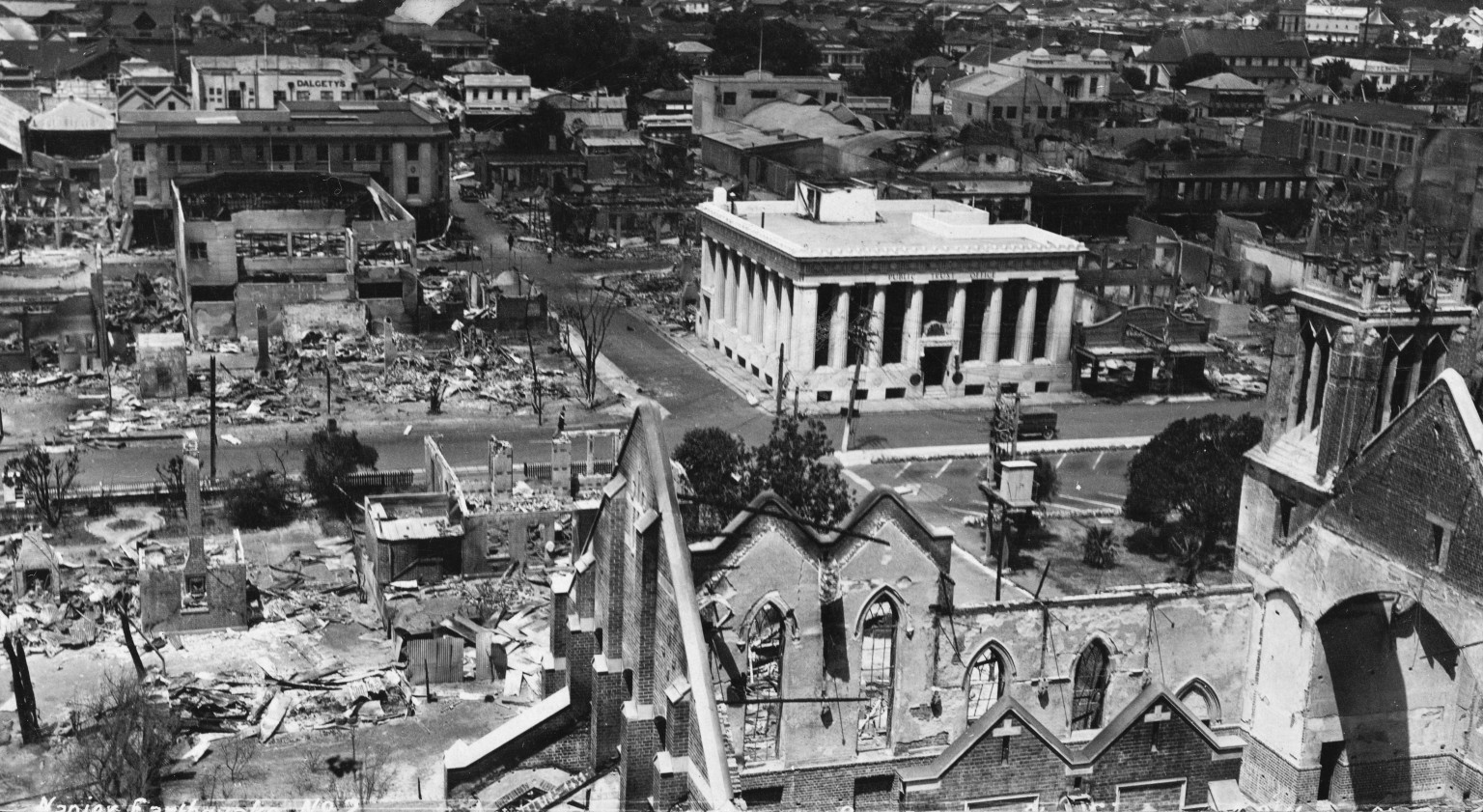150 Years - A Sense of Place II
The Historic Place Category 1 Public Trust building in Napier is testament to the role and status of Public Trust in the regions throughout our history.
Create a will online

Napier Public Trust building
The Historic Place Category 1 Public Trust building in Napier – an example of Public Trust's building boom during the 1920s and a rare survivor of the 1931 Hawke's Bay Earthquake – is testament to the role and status of Public Trust in the regions throughout our history.
The decentralisation of growing business from head office to district offices after the First World War resulted in Public Trust constructing 16 spacious new premises during the post-war building boom of the 1920s: Masterton (1921); Palmerston North, Napier, New Plymouth and Invercargill (1922); Hamilton and Gisborne (1923); Timaru and Blenheim (1924), Christchurch, Dannevirke, Waipukurau, Stratford and Whangarei (1925); Hastings (1926; and Dunedin (1929). Although designed by different architects, each of these buildings featured an impressive façade that gave an air of permanence, stability and security.
Initially, Public Trust’s work in Napier had been conducted in the Government Buildings and later in a leased building in Tennyson Street. By 1918, with business undergoing rapid growth, Public Trust decided to buy land at the corner of Tennyson and Dalton Streets for our own purpose-built premises in Napier. A competition was held to select the design of the building with the first prize awarded to Hastings architects Hyland and Phillips, and a tender of £14,693 from Hamilton and Whillans of Napier accepted to construct the building. The conditions of the competition were that the building should be two storeys high, constructed of brick and the entire building fireproof – stipulations that would prove provident.

When Napier Public Trust Office opened for business in 1922 the classical Doric design and convincing evocation of Greek Temple architecture, gave the building a landmark presence described in the Hawke's Bay Tribune as "the finest building in Napier". Public Trust was here to stay to support the people of Napier.
On Tuesday, 3 February 1931, the Hawke’s Bay 7.8 earthquake killed 256 people, injured thousands more and devastated the region in what remains one of the worst national disasters in New Zealand’s history. In Napier, near the centre of the quake, the earthquake and subsequent fire destroyed most of the central business district. Napier Public Trust, although damaged, was one of the few buildings to survive.
Wellington-based architect Stanley Fearn assessed the Public Trust building and found that, although the building was in no danger of collapse, it was in need of considerable reconstruction and strengthening. This work was undertaken by Fletcher Construction and involved supporting existing columns with new pillars of concrete and steel, and reconstructing most of the brick walls. In the meantime, some Public Trust employees used the Supreme Court building for offices, while some were sent to the Dannevirke office. A few months following the quake they were brought back together at Tiffen Park House in Napier, with staff daily carrying their ledgers back and forth between the safe in the Tennyson Street building to the temporary offices. Public Trust building was reoccupied in early 1932.
Public Trust continued to support the community. In the months and years after the earthquake in addition to its core business, with customers killed in the earthquake and many others with properties damaged or destroyed, Public Trust formed a central part in the administration of the Hawke's Bay Earthquake Relief Fund established by Prime Minister Gordon Coates. The fund dealt with immediate claims (e.g. for food, clothing, medical treatment and accommodation), and financial assistance for repair of damage to private dwellings. Grants were also given for private loss, and provision was made for people injured and the dependants of people injured or killed. To help in the distribution of the fund Public Trust employees from around the country were sent to the Hawke's Bay. The last payment from this fund was made in the early 1970s.
By the 1980s, these Public Trust buildings of the 1920s-era were initially renovated but later relinquished for smaller regional customer centres at the turn of the millennium. Their significant heritage value, however, was recognised with two-thirds of Public Trust buildings constructed in the 1920s registered as Historic Places.
Napier Public Trust building, for example, was renovated by Public Trust in 1986 and sold in the mid-1990s. In 1989, Napier Public Trust building was registered as a Historic Place Category 1 – the highest heritage category. Heritage New Zealand Pouhere Taonga noted that,
Public Trust building, Napier, has been an important landmark in the Napier civic centre for most of the twentieth century and has great significance as one of the few buildings to survive the Hawke's Bay Earthquake and subsequent fire. It was the home of [District] Public Trustee and staff until it was sold in the mid-1990s. Public Trust's particular role in the rejuvenation of Napier after the earthquake gives the building great historic and symbolic significance to the people of Napier. Architecturally it is a magnificent example of neo-Grecian architecture. It is arguably the most distinctive of all Napier's buildings, a considerable statement in a city with many remarkable buildings. It is a most telling contrast with the predominantly Art Deco buildings around it. Its survival is a fortuitous outcome arising from the specific demands made of the successful architectural tenderers, but whatever the reason for its survival, the building represents a symbol of the permanence and solidity that Public Trust would have wanted to convey to its clients.
The Historic Place Category 1 Napier Public Trust and the Category 2 listing of a further dozen former Public Trust buildings from the 1920s, together with recent major redevelopments of these buildings in Christchurch and Dunedin, reveal the ongoing heritage and commercial value of these iconic Public Trust buildings in the regions.